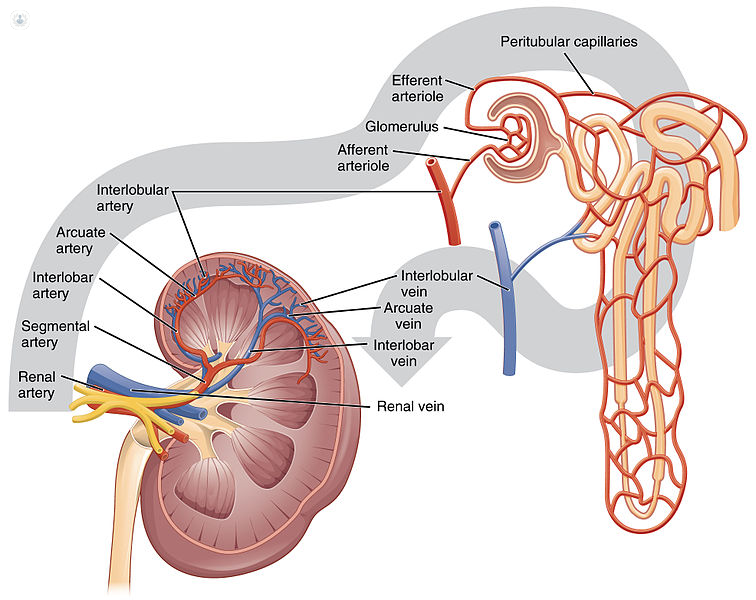Renal denervation
What is renal denervation?
Renal denervation is a relatively new minimally-invasive treatment that aims to reduce blood pressure in people with hypertension. Renal denervation is not widely practiced in the UK due to conflicting evidence over its effectiveness.

Why is renal denervation performed?
This treatment is performed in patients suffering from resistant hypertension. This diagnosis is when someone has an excessive pressure in the bloodstream of the arteries but cannot lower it, even if they are taking more than three drugs a day and has made changes in their lifestyle habits.
What happens during renal denervation?
Renal denervation is performed by inserting a catheter with four electrodes into the renal arteries via the femoral approach. Once the device is in place, the catheter emits a heat of between 40 and 50 degrees to cancel out small nerves that are in the renal artery. In this way, the kidney creates a smaller amount of the hormones that increase the tension. The intervention is performed on both kidneys.
The procedure is carried out under a local anaesthetic and takes around an hour. You may need to stay in hospital overnight following the procedure but should be able to return to your daily activities afterwards.
Risks
The main risk of renal denervation is dissection of the renal artery, but this can be treated with a stent. Other risks include bruising and bleeding. Renal denervation does not appear to cause any damage to renal function.
